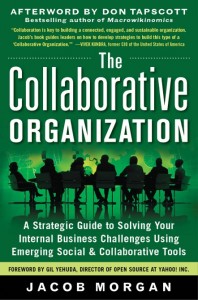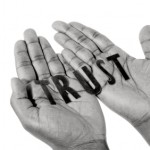Why Pinning the Credit Matters: The Principles Behind the Practice
 While it’s been almost 15 years since Charles H. Green wrote his blog Pinning the Credit in 2009, the original concept remains powerful: diverting to another a concentrated dose of social approval for being the primary cause of something really good.
While it’s been almost 15 years since Charles H. Green wrote his blog Pinning the Credit in 2009, the original concept remains powerful: diverting to another a concentrated dose of social approval for being the primary cause of something really good.
What seemed like a clever tactical insight at the time – a useful approach for breaking through client resistance – reveals something far more fundamental: the act of attribution isn’t merely a behavior but a manifestation of core principles that define who we are in our professional lives.
The Inner Architecture of Attribution
Our actions are manifestations of our principles – the beliefs and values we carry inside ourselves and live by. While attribution might appear as a simple behavior on the surface, it actually reveals the deeper infrastructure of how we view ourselves in relation to others and our work.
When we pin credit consistently, we demonstrate what we truly believe: that ideas deserve their proper origins, that relationships outweigh momentary recognition, and that honesty matters even in small moments when dishonesty would likely go undetected.
This isn’t about performing trustworthiness. Attribution that springs from genuine principles has a consistency that strategic attribution cannot maintain.
Beyond Technique to Character
This distinction matters profoundly. In professional environments saturated with tactical advice and behavioral “hacks,” attribution stands apart. It cannot be effectively faked long-term because its power comes precisely from its authenticity. The momentary benefit of claimed credit fades quickly, while the lasting impact of principled attribution compounds over time.
And that’s where the remarkable worth of credit-pinning reveals itself. Unlike skills that can be learned regardless of underlying values, attribution functions as a window into character. It answers the question others are constantly assessing: “Who are you when recognition is at stake?”
What Charlie wrote about in 2009 wasn’t just a clever technique but a demonstration of the Four Trust Principles in action – one that, when consistently applied, builds the invisible foundation upon which meaningful professional relationships stand.
How Attribution Builds Trust Brick by Brick
When you deliberately pin credit on others, you’re constructing trust through each of the four Trust Principles:
Focus on the Other: Attribution embodies genuine other-focus by celebrating contributions for their intrinsic worth, not as instruments for personal advancement. When you highlight a colleague’s insight or cite a client’s perspective, you demonstrate that you value them as ends in themselves rather than means to your own success. Unlike strategic name-dropping that serves hidden agendas, authentic credit-pinning acknowledges others’ contributions simply because they deserve recognition.
Collaboration: By pinning credit, you demonstrates your fundamental assumption that ideas improve through contribution rather than competition, fostering trust as others experience you as someone who genuinely values joint creation and shared success over individual accolades. This isn’t superficial teamwork rhetoric but the lived practice of believing multiple perspectives create superior outcomes.
Medium- to Long-Term Perspective: Each time you attribute others, you signal investment in relationship durability rather than transactional advantage. This temporal perspective transforms how others interpret your intentions, as they recognize your willingness to build slowly rather than extract value hastily, and communicates that this relationship matters beyond the current exchange—precisely the long-view thinking that allows trust to develop fully as others experience the consistency of your commitment to their success over time.
Transparency: Attribution demonstrates comfort with revealing the full context of your thinking rather than presenting a carefully curated facade. This intellectual honesty creates an environment where information flows freely because everyone trusts they’ll receive proper recognition. The simple clarity of “this insight came from Alex” cuts through organizational politics and builds trust through the relief that comes when others realize you have nothing to hide and no intention to obscure.
The combined power of these four principles explains why attribution isn’t merely a politeness tactic but a fundamental trust-building practice. When you pin credit consistently, you’re demonstrating all four trust elements simultaneously, creating a compound effect that transforms professional relationships at their core.
Beyond Individual Practice: Attribution Culture
While individual attribution practices build trust in immediate relationships, organizations that systematically encourage credit-pinning create environments where trust becomes the default rather than the exception.
These attribution-rich cultures develop distinctive characteristics: lower political maneuvering, faster information sharing, more rapid iteration cycles, and greater resilience during challenges. Trust, built through consistent attribution, becomes the lubricant that reduces friction throughout the system.
The Future of Trust Through Attribution
As professional environments become increasingly virtual, distributed, and complex, the trust-building function of attribution will only grow more essential. When we can’t rely on physical proximity or shared history to develop trust, deliberate credit-pinning becomes an accelerant for creating the sense of safety needed for meaningful collaboration.
The story Charlie shared captures something profound about human psychology and professional effectiveness. By diverting “a concentrated dose of social approval” to another, we don’t diminish our own value—we enhance it through the trust we build.

 Zoom and other virtual meeting spaces helped save personal and professional relationships across the globe during the COVID-19 pandemic. While we all adjusted to an explosion in the prevalence of virtual teams, which have since revolutionized the modern workplace, the challenges were — and still are, quite honestly — clear.
Zoom and other virtual meeting spaces helped save personal and professional relationships across the globe during the COVID-19 pandemic. While we all adjusted to an explosion in the prevalence of virtual teams, which have since revolutionized the modern workplace, the challenges were — and still are, quite honestly — clear.
 This post comes from our upcoming book,
This post comes from our upcoming book,  The storyline almost writes itself. Blinded by infighting and bureaucracy, both Microsoft and Nokia squandered great opportunities to innovate. In turn, they are then overtaken by more nimble competitors, particularly Apple.
The storyline almost writes itself. Blinded by infighting and bureaucracy, both Microsoft and Nokia squandered great opportunities to innovate. In turn, they are then overtaken by more nimble competitors, particularly Apple.